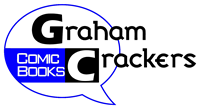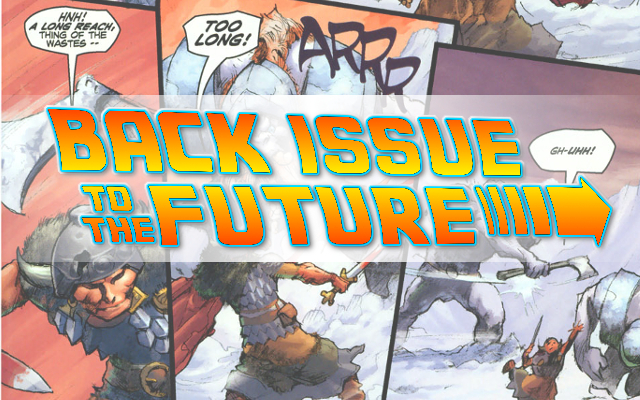Commentary by Dan W.
2004 was a good year to be a Conan fan. Publishing house Del Rey was in the midst of publishing three excellent collections of Robert E. Howard’s original Conan pulp stories (removing all the edits L. Sprague de Camp introduced in the Lancer paperbacks in the ‘60s and ‘70s and including gorgeous plate illustrations from the likes of Gary Gianni and Mark Schultz), the subpar 2011 movie starring Jason Momoa didn’t exist yet, even as the proverbial glimmer, and Kurt Busiek, Cary Nord, and Dave Stewart, enabled by Dark Horse licensing the comic rights, began turning out incredible sword and sorcery adventures in the revived Conan monthly series.

From the opening scroll, to original arcs featuring the immortal Hyperboreans and their withered husk of a civilization or new companions like Janissa the Widowmaker, to adaptations of classics like ‘The Tower of the Elephant’ or ‘The Frost Giant’s Daughter,’ basically every issue for almost three years was comic book gold.
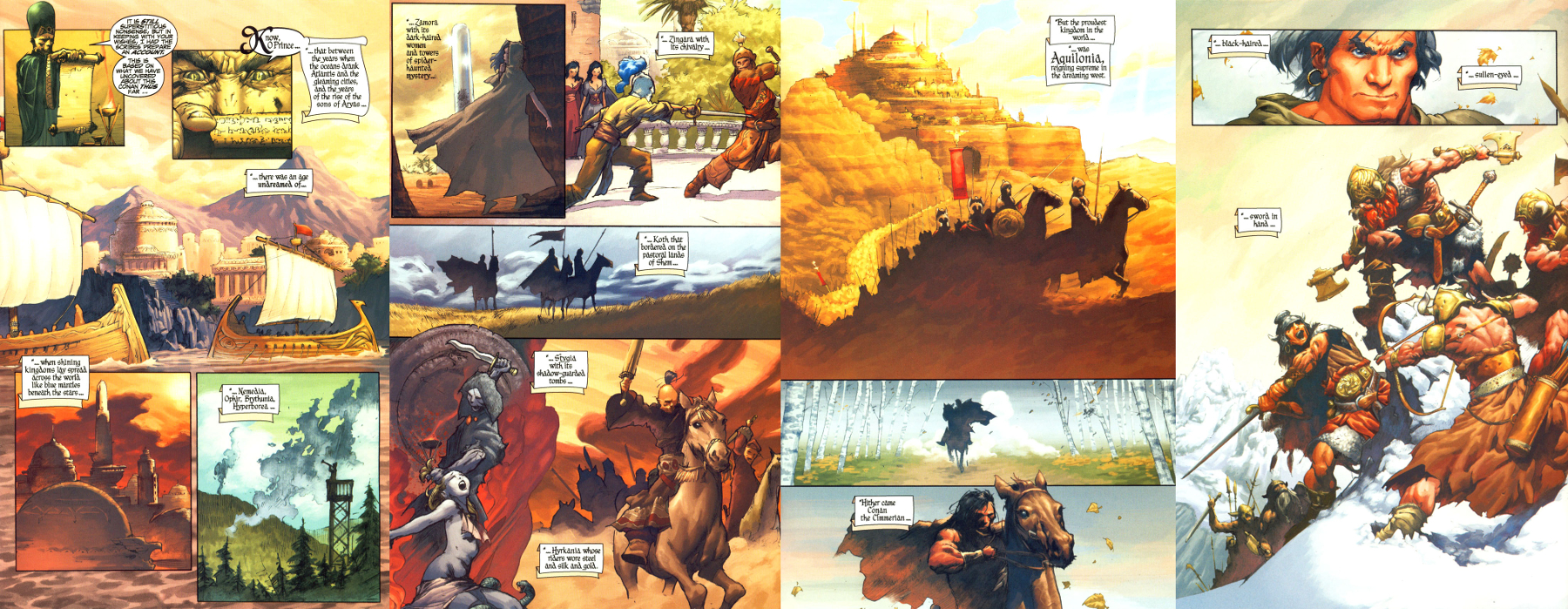
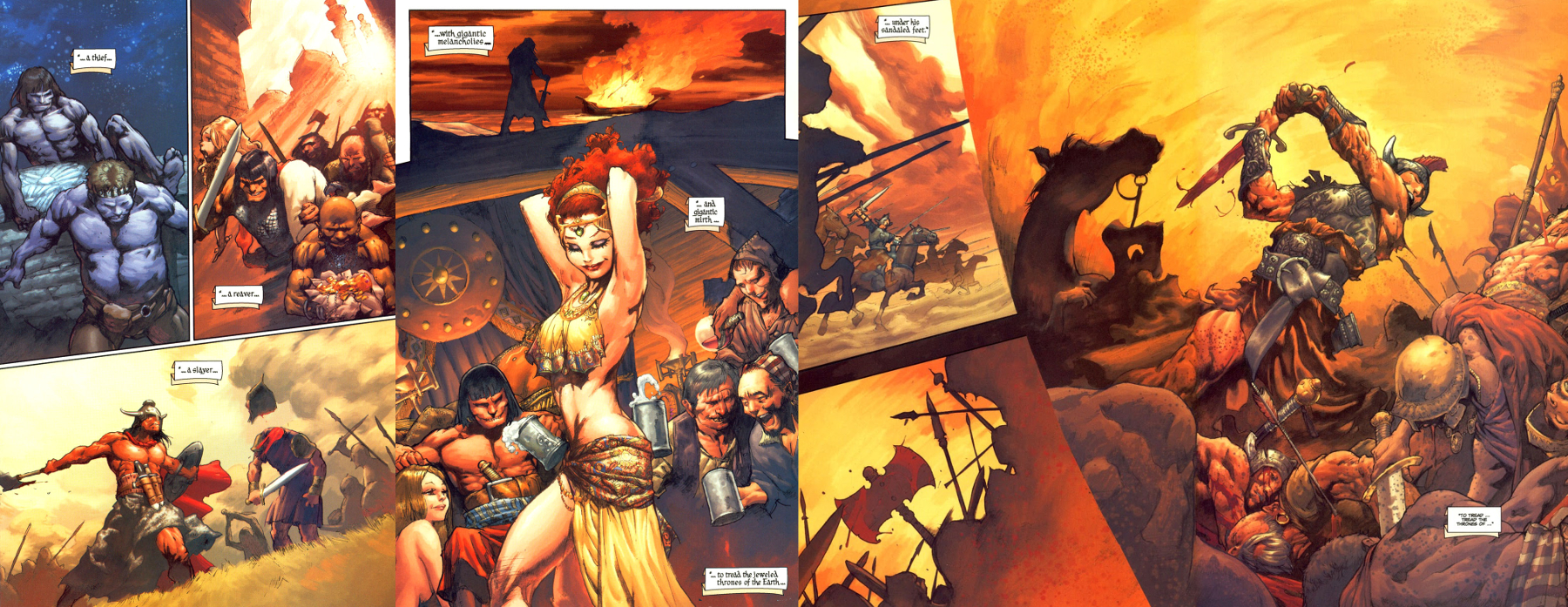
Busiek found the voice of the original tales while crafting something that still felt fresh. Nord was turning in the best pages of his career, clearly having grown from the Daredevil artist from the ‘90s. Dave Stewart, colorist supreme, rendered every page as a painting. Colorists are often the unsung heroes in the industry, but Stewart is one of the best, and he deserves heaps of praise for evoking the feel of the fantasy art heyday. You won’t mistake it for Frazetta (Nord’s linework is mostly visible), but the emotion and life he imparts to the windswept cloudscapes and icy reaches in ‘Daughter,’ or the smoke and shadow of ‘The God in the Bowl,’ or just the general sweep of the varied fantasy kingdoms and peoples, is masterful. To this day, I will give books I have no other interest in a chance if Dave Stewart is working on them.
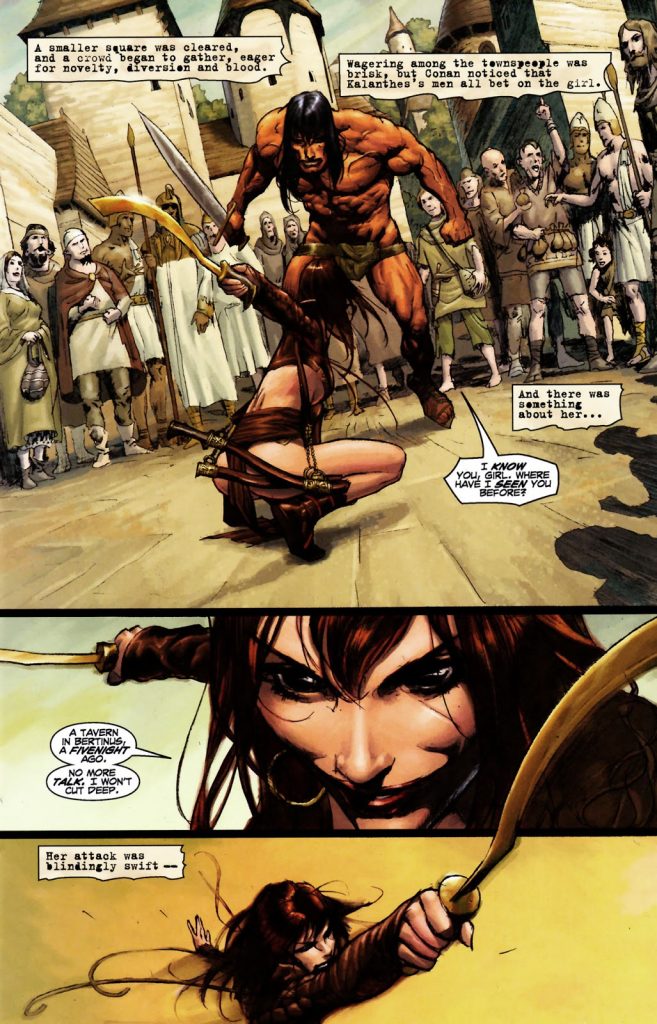
(Brief aside, when Dark Horse licensed Conan, they also gained access to all of Marvel’s previous comic book content, including Savage Sword and the old Roy Thomas/Barry Windsor Smith/John Buscema material. They immediately began recoloring and re-releasing these classics, but the original plan was for Dave Stewart to color both the new monthly series and the reprint material, before it became apparent that the time he was putting into the new pages wouldn’t allow him to work on the reprints. The recoloring turned out fine regardless, though one can only imagine the flair it might’ve had.)
There were pitch-perfect fill-in issues by Busiek and artist Greg Ruth that flashed back to Conan’s youth in the ‘Born on the Battlefield’ arc, that played out one issue every six months. Guest illustrators like legend Michael Kaluta popped in to do sequences where Conan is drugged, enchanted, or otherwise out-of-mind, using the shift in art style to mark the divide from the ‘reality’ of Nord’s pages. Even the letters column (and we marveled that it even had a letters column in 2004) was solid. Fans actually wrote in with intelligent opinions and argued across months of responses! Unheard of in an industry where fans nearly come to blows over whether Star Trek is better than Star Wars (spoiler: it’s Trek) or if Thor could beat Superman.
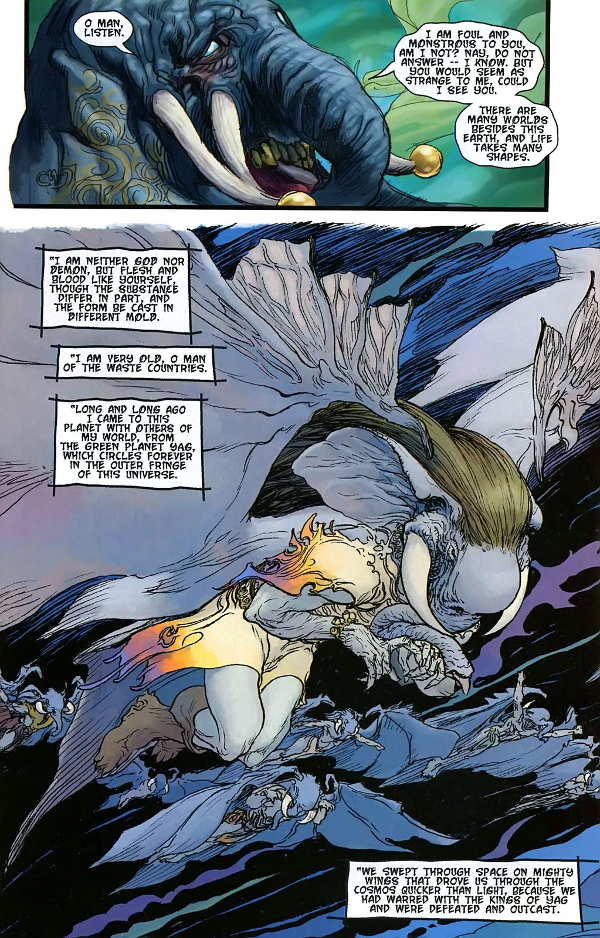
So, what is it exactly that makes this series special? It stitches together all of its elements and reader expectations into the Conan gestalt. Conan is a character that is easy to lose in a trap, that trap being a checklist of common motifs and plot points: eldritch beasts, damsel in distress, evil wizards, etc. The 2011 movie maligned above commits this sin. It is literally a checklist of disparate elements from various narratives stitched together, with some cheap 3D effects tacked on in post (thanks Avatar). The worst comics do the same. Rote, tired retreads of Conan’s travels taking him to a new town with another corrupt vizier, or another mercenary army, or another terror from beyond the veil, while having none of the passion or spark that denotes the best of them.
But the early issues of the Dark Horse series transcend this. Conan, while he remains his trademark qualities (disdain for “civilized society,” keen-witted, heroic strength, distrust of aforementioned wizards) also grows as a character. Youthful exuberance is hardened by his journey to Hyberborea, he mourns the honest comrades he’s lost, keeps a grudge for those who betray him. Part of this growth stems from Busiek and Co. not being bound to an episodic format like the old Marvel comics, or the non-chronological nature of Howard’s original pulps, the other half is the talent on display elevating and translating a then 70-year old character for a new era, imbuing Conan with all of the wild zeal and fury he is beloved for, sending him, and the reader, on vibrant and visceral adventures.
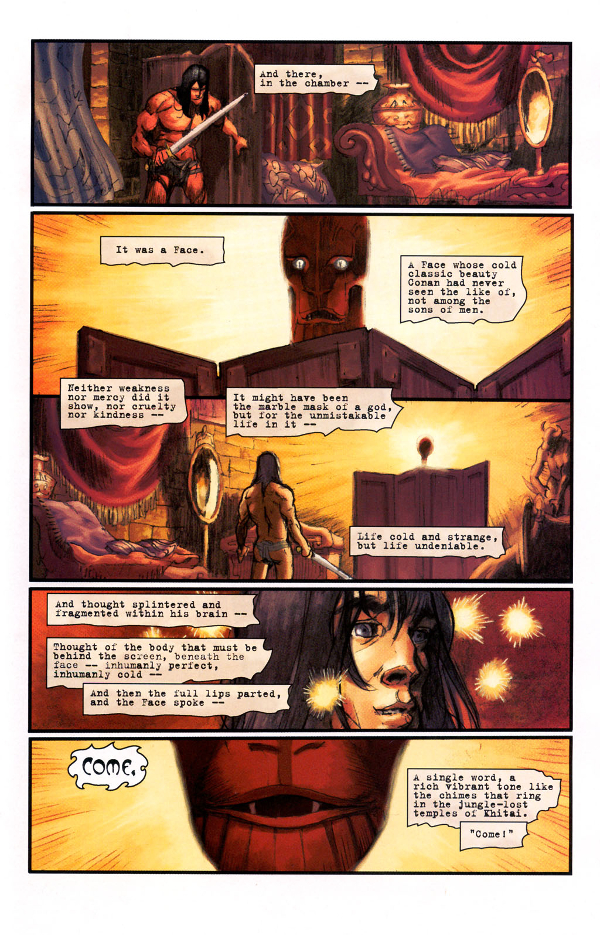 Unfortunately, in 2006, DC Comics convinced Busiek to leave and sign on to write Aquaman for them. Entitled Sword of Atlantis, it was a poor Conan knock-off underwater, notable in hindsight only for derailing the Conan series. Tim Truman would step in to replace him. Stewart was succeeded shortly after by Richard Isanove, skilled, but a stark artistic shift for the worse. Nord soldiered on a while longer, departing after the completion of a ‘Rogues in the House’ adaptation. Dark Horse would continue publishing Conan for another decade with varying success, with none of it really rivaling those first years for quality, though a brief Brian Wood/Becky Cloonan ‘Queen of the Black Coast’ era arc was a standout. The worse loss though, is that this creative team never delved further into the Conan mythos. Since they were moving chronologically through Conan’s life, these early comics are all Conan the Thief, and not the mercenary years, or King Conan. I would have paid handsomely to see Busiek, Nord, and Stewart put their collective talents into an adaptation of “Hour of the Dragon,” one of, if not the best Conan stories ever published.
Unfortunately, in 2006, DC Comics convinced Busiek to leave and sign on to write Aquaman for them. Entitled Sword of Atlantis, it was a poor Conan knock-off underwater, notable in hindsight only for derailing the Conan series. Tim Truman would step in to replace him. Stewart was succeeded shortly after by Richard Isanove, skilled, but a stark artistic shift for the worse. Nord soldiered on a while longer, departing after the completion of a ‘Rogues in the House’ adaptation. Dark Horse would continue publishing Conan for another decade with varying success, with none of it really rivaling those first years for quality, though a brief Brian Wood/Becky Cloonan ‘Queen of the Black Coast’ era arc was a standout. The worse loss though, is that this creative team never delved further into the Conan mythos. Since they were moving chronologically through Conan’s life, these early comics are all Conan the Thief, and not the mercenary years, or King Conan. I would have paid handsomely to see Busiek, Nord, and Stewart put their collective talents into an adaptation of “Hour of the Dragon,” one of, if not the best Conan stories ever published.
If you’ve ever enjoyed a fantasy series, or have any fondness for any of the old pulp heroes, and you haven’t read this run, do yourself a favor and pick it up. Single issues are mostly a few bucks each (where you get that great letters column and some fun(?) Two-Gun Bob Howard backups), or Marvel is currently reprinting the whole run via their Epic line of trade paperbacks.
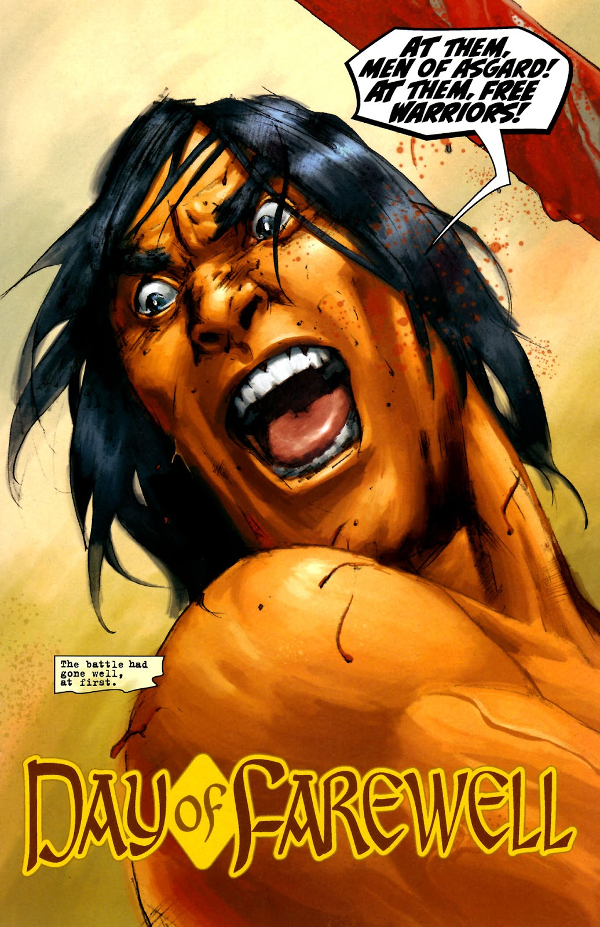
(I originally intended BITTF to highlight great single issues or the occasional small arc, so I’m cheating here significantly by including 32 comics, but, hey, who’s going to stop me, you? And please, join me next time, when I recommend the first 108 issues of Fantastic Four, that overlooked gem of a series.)
